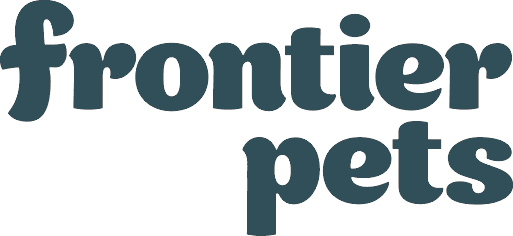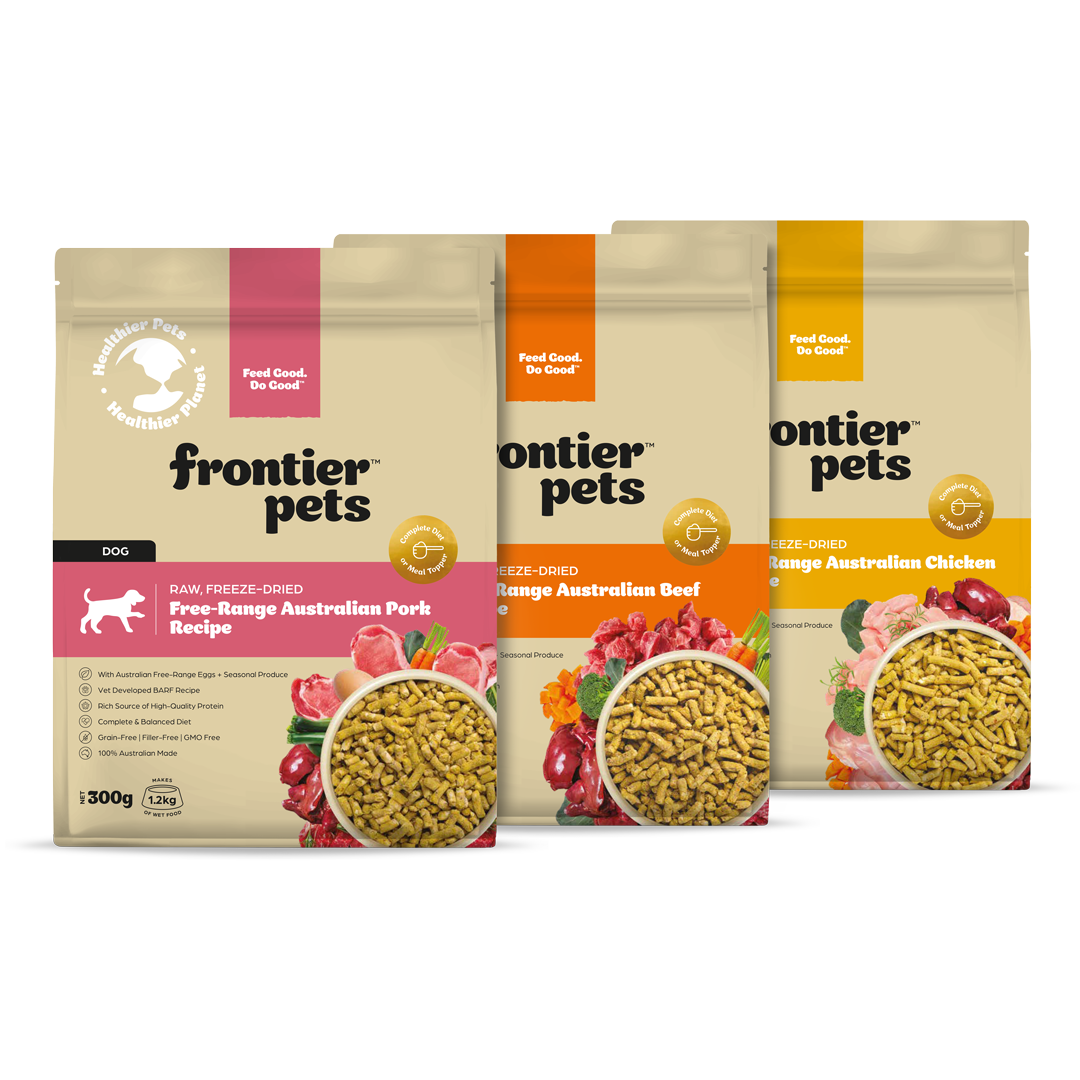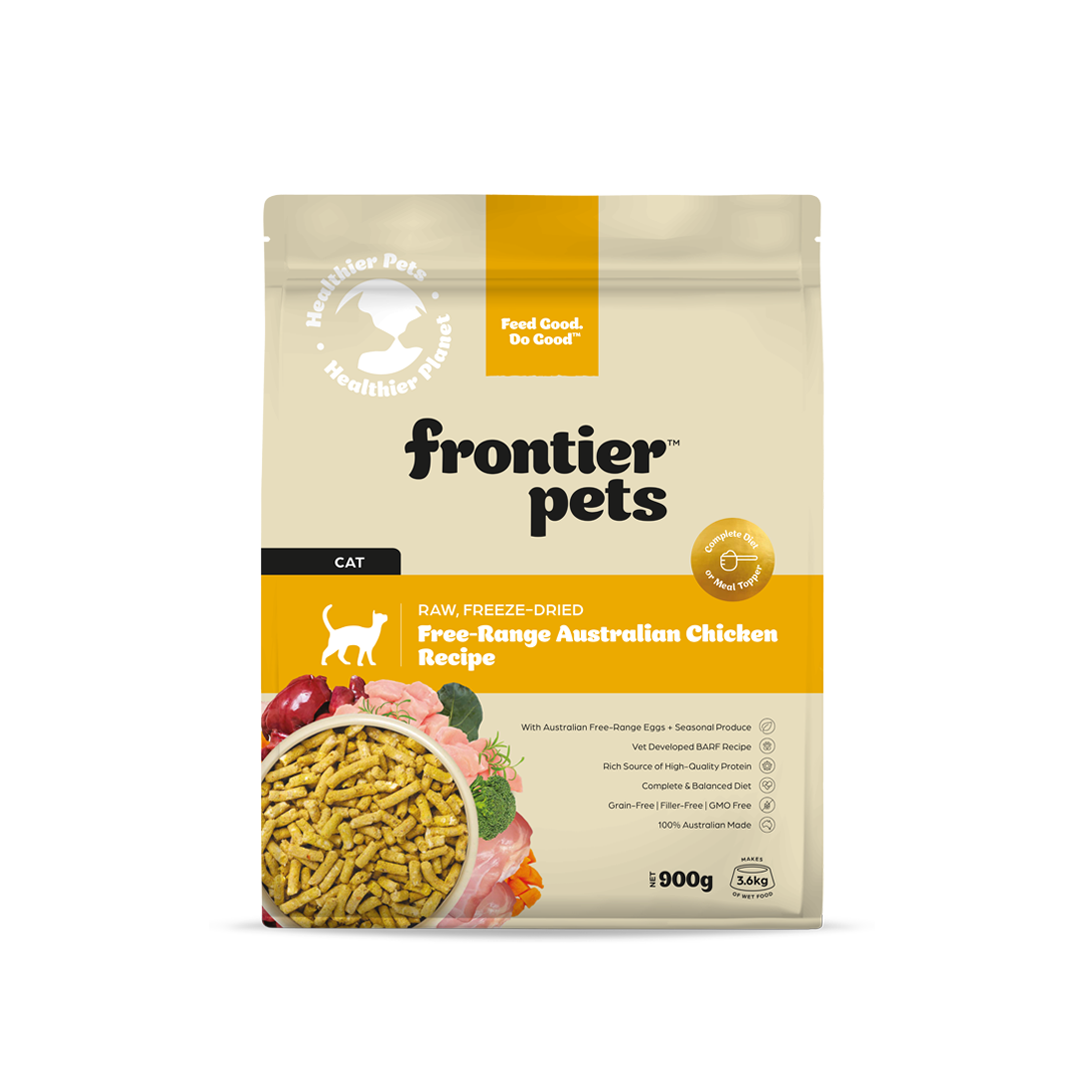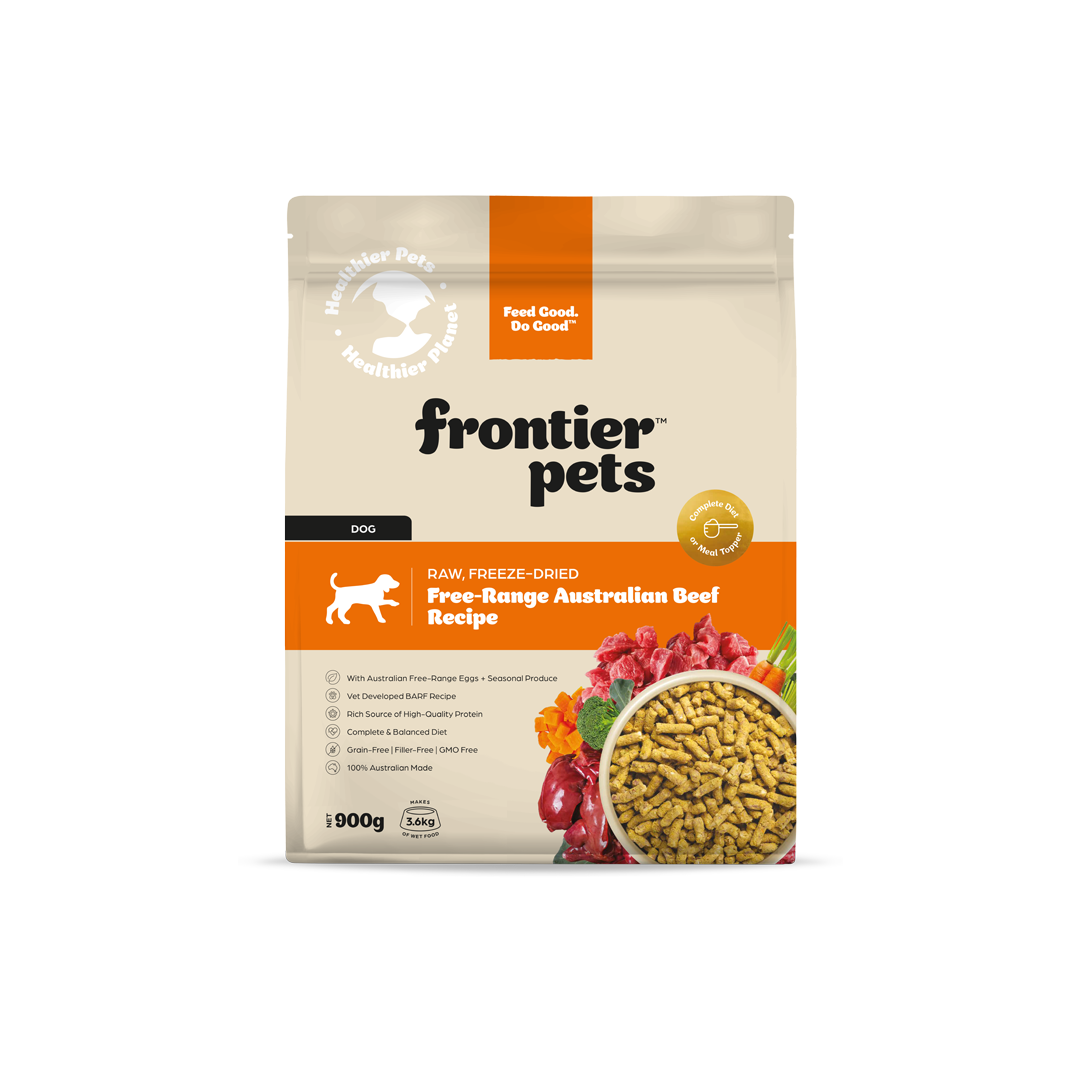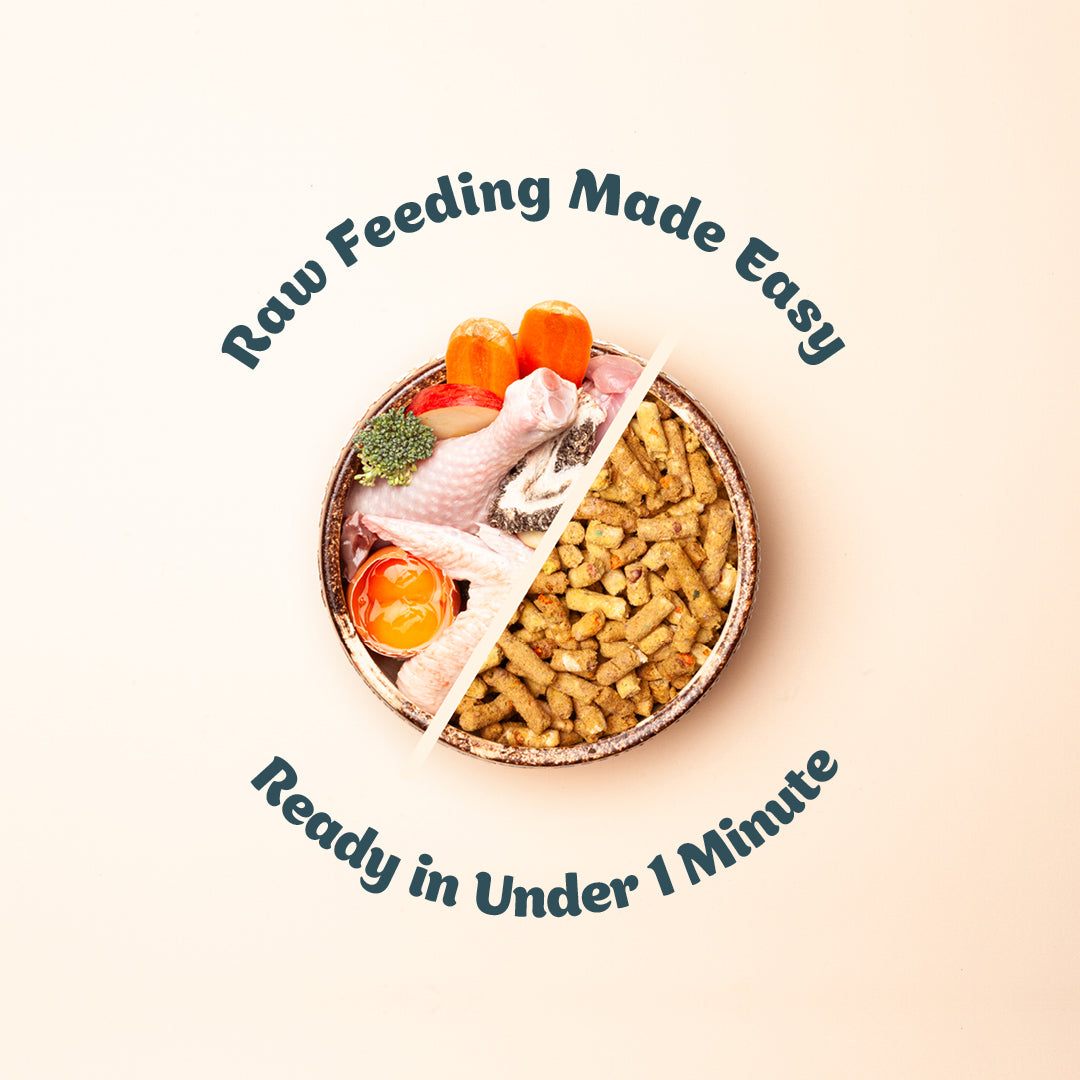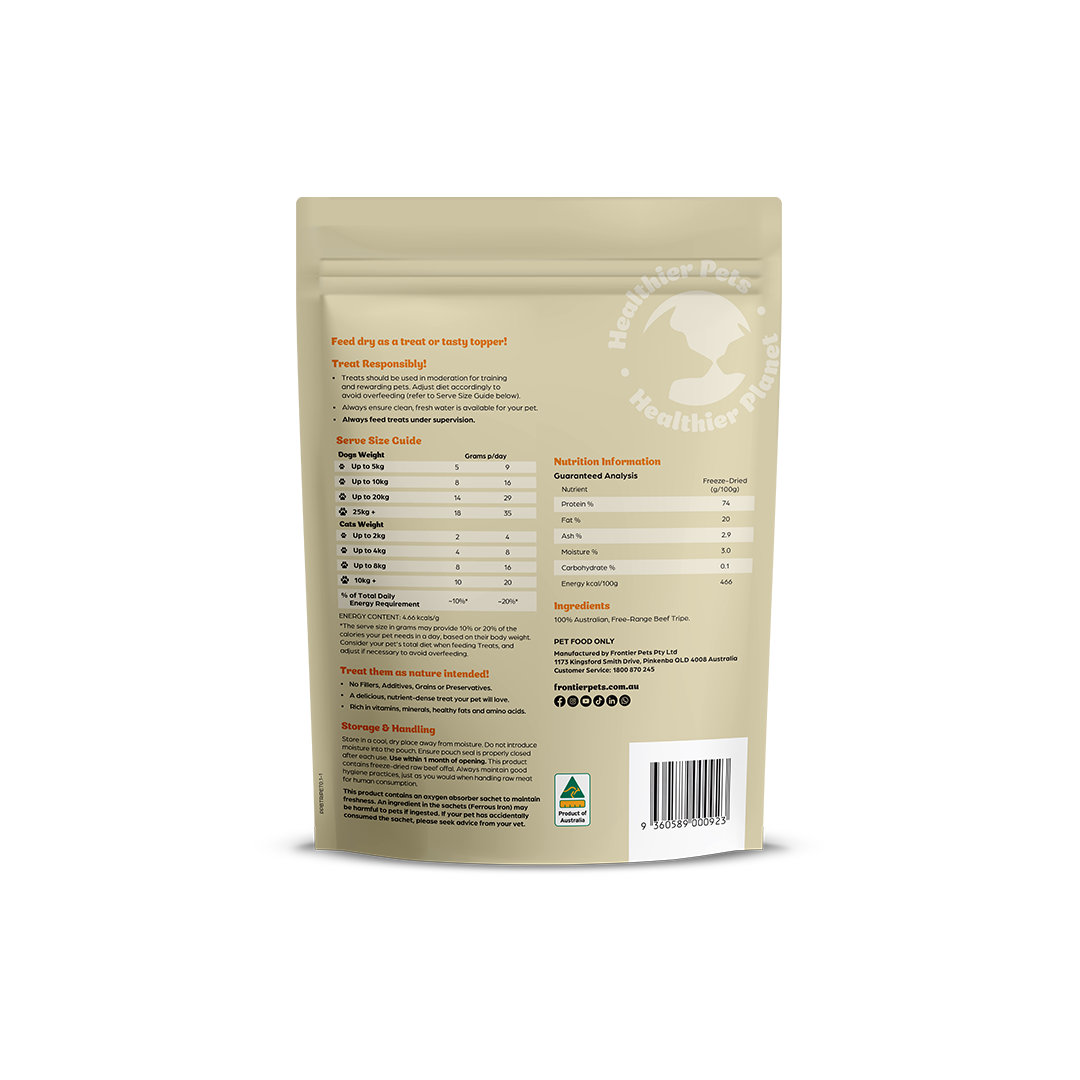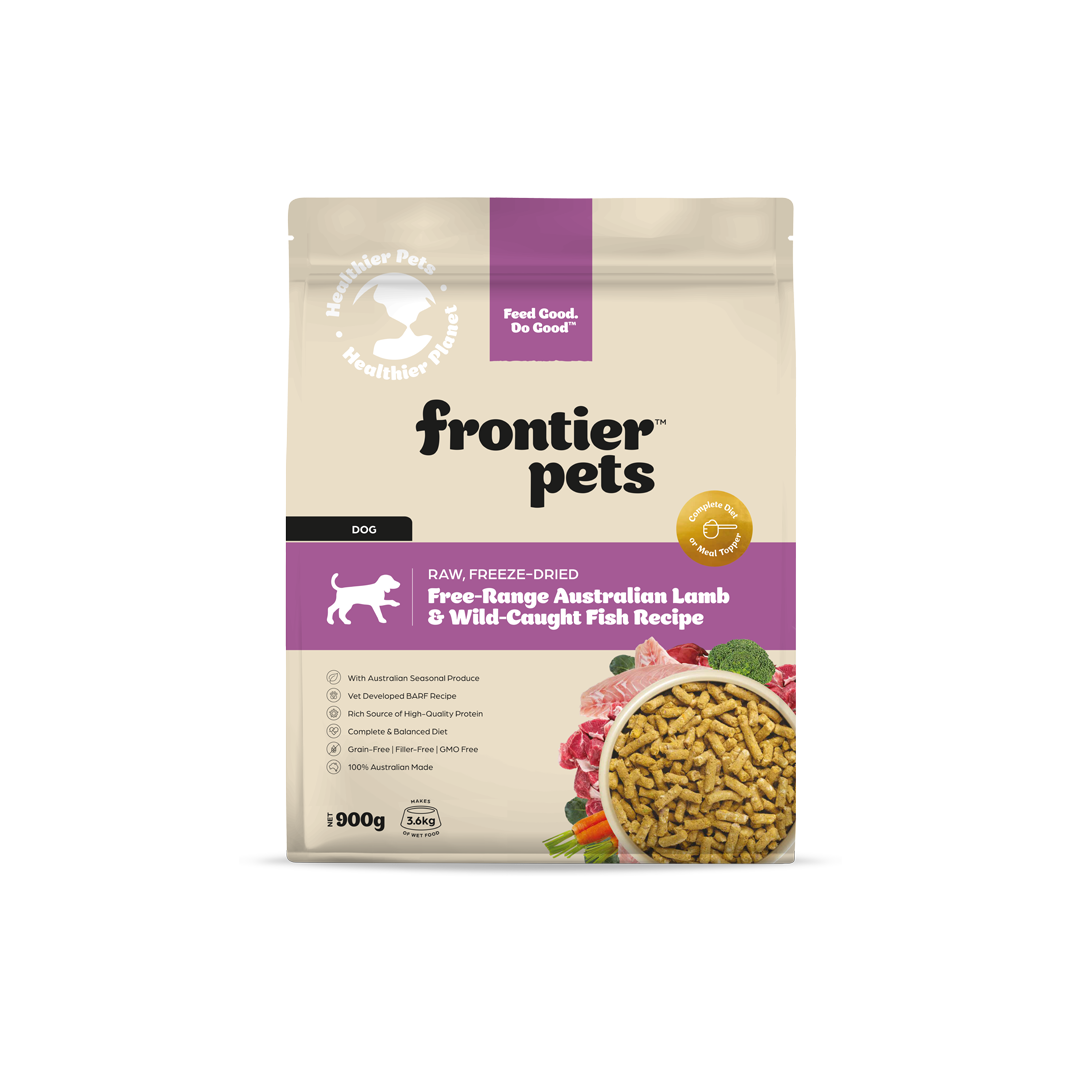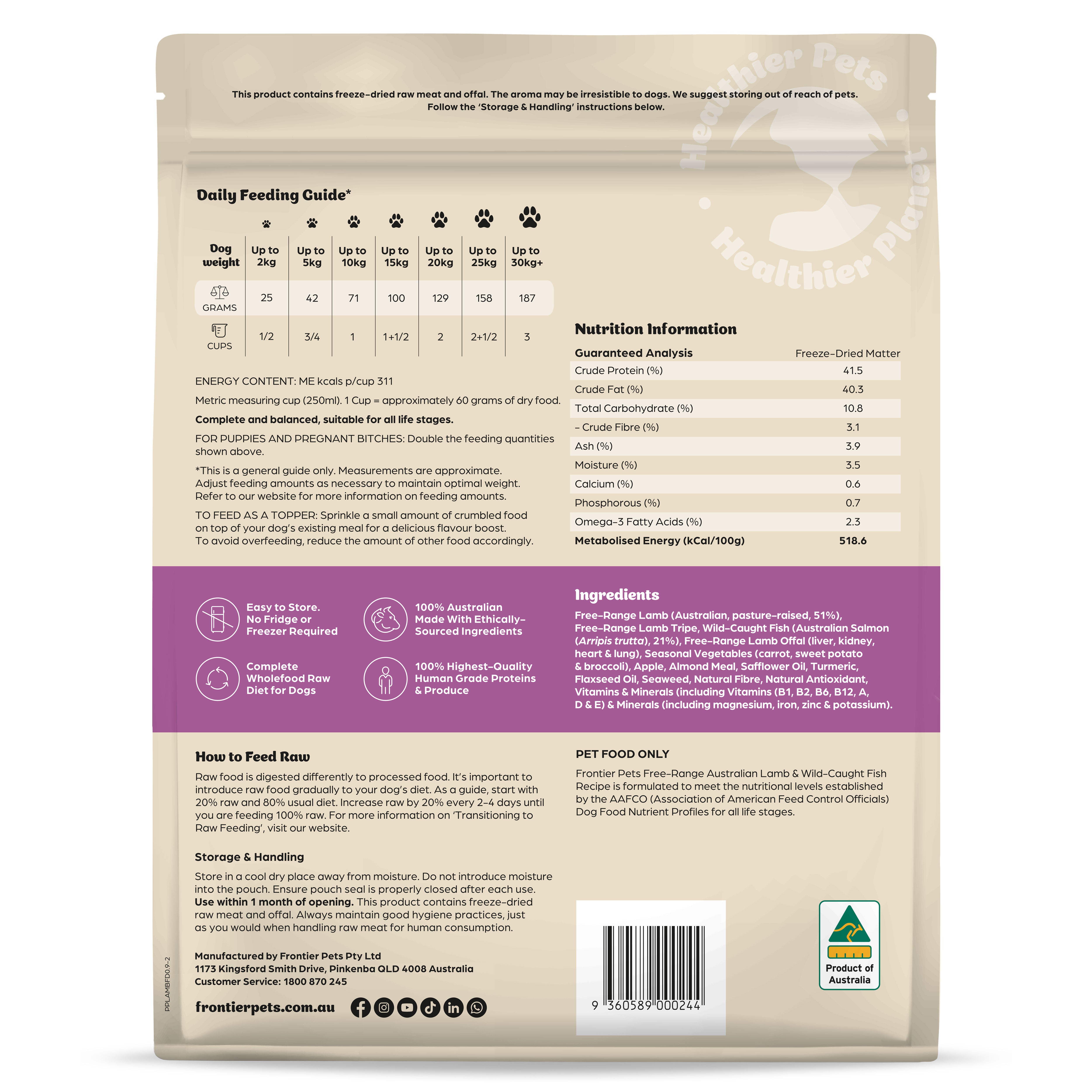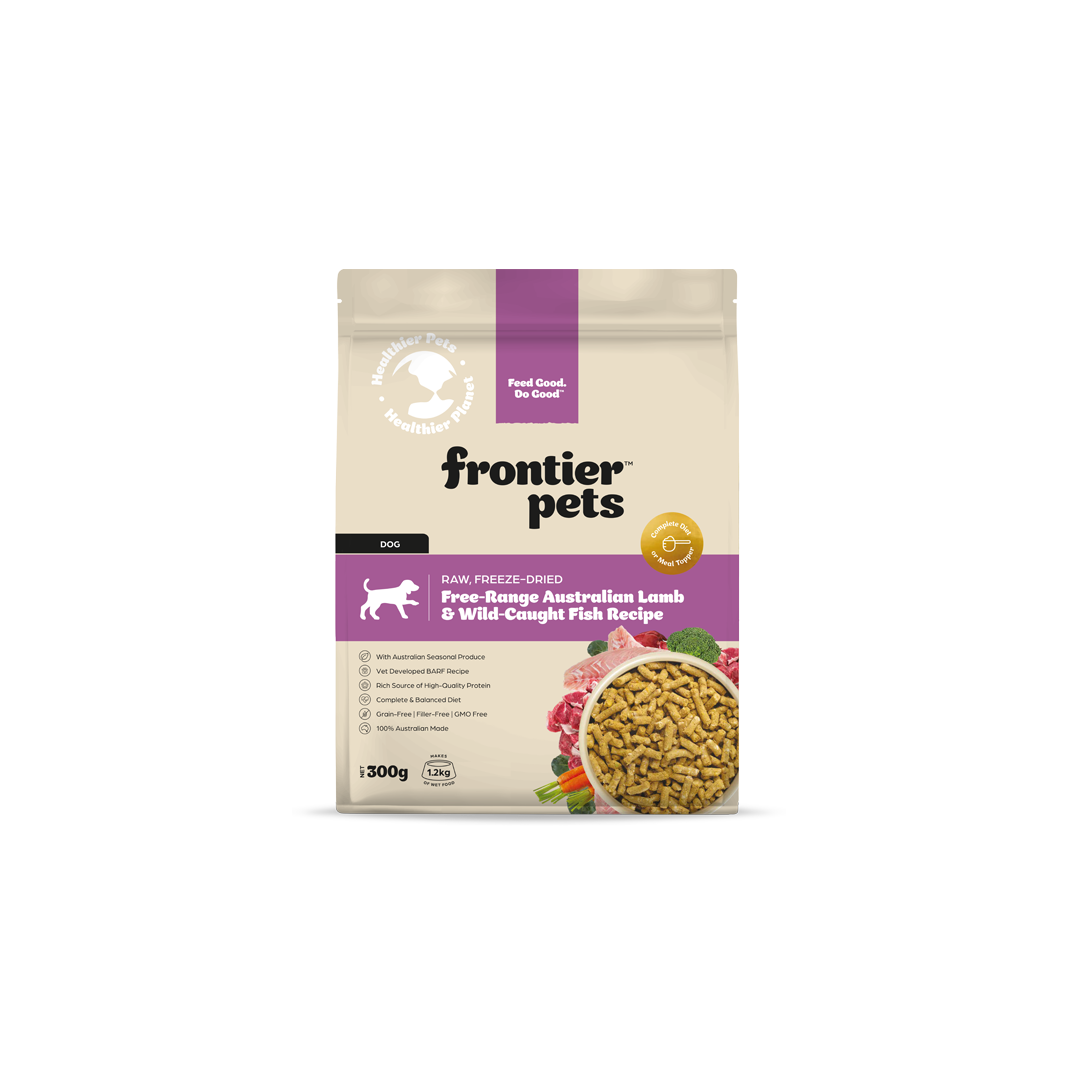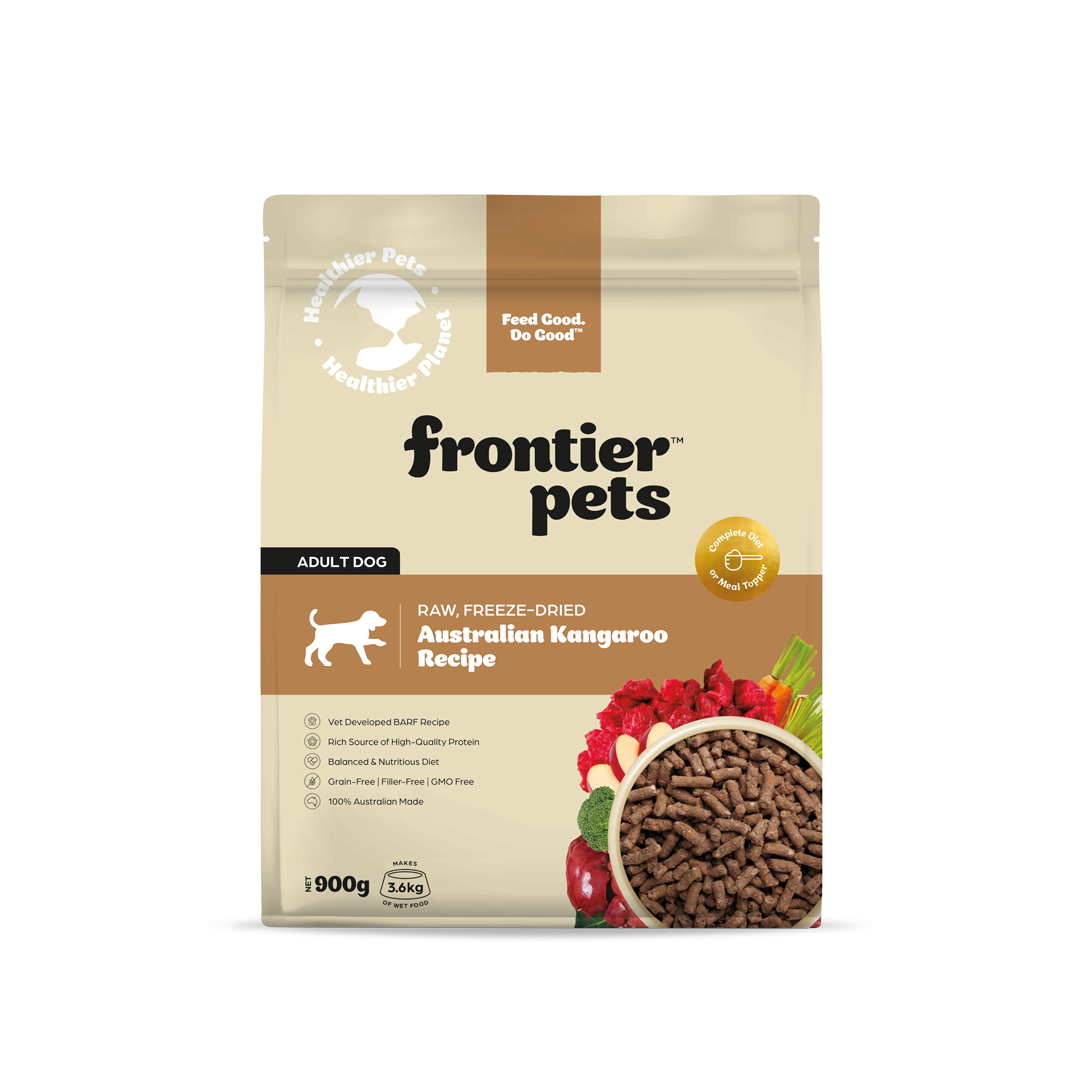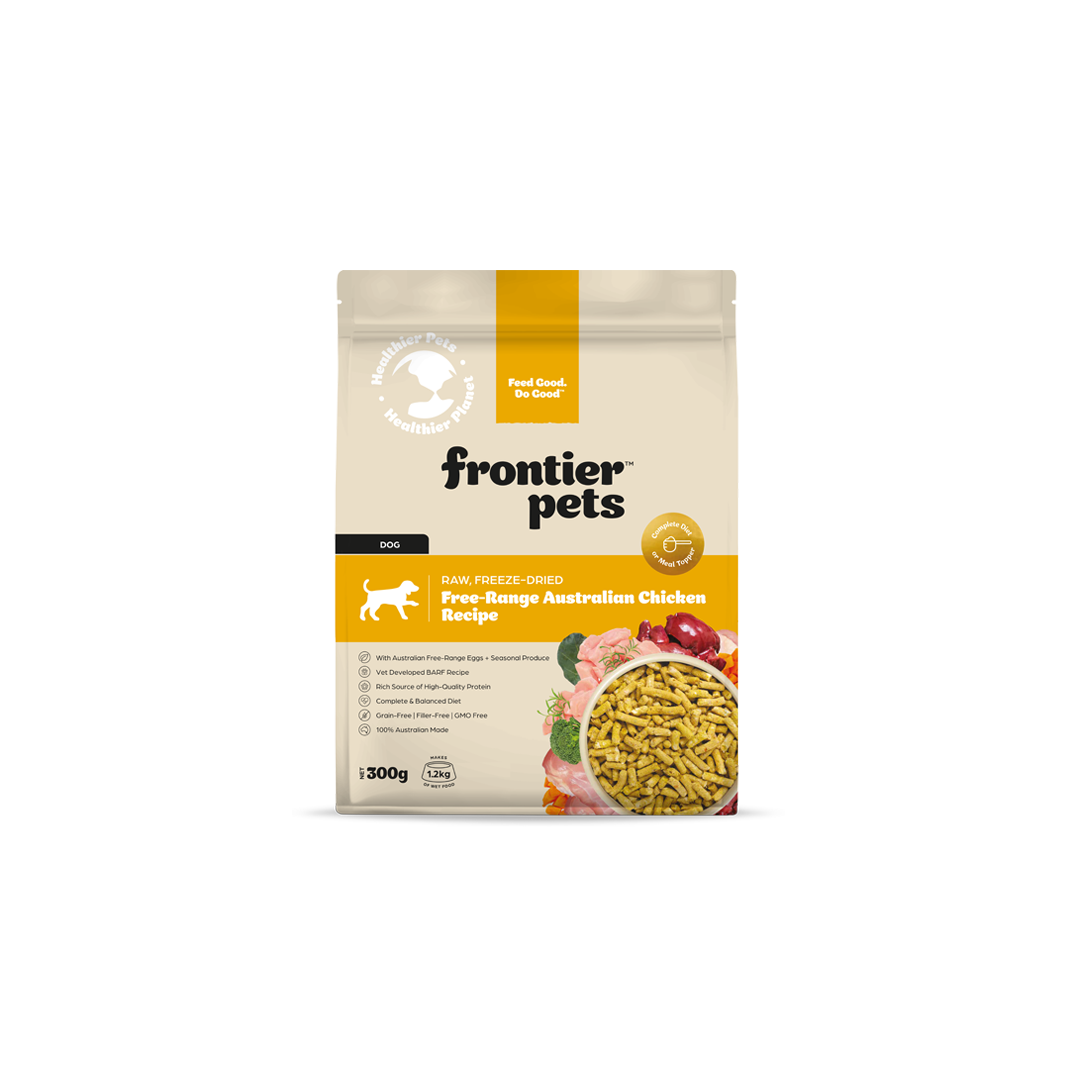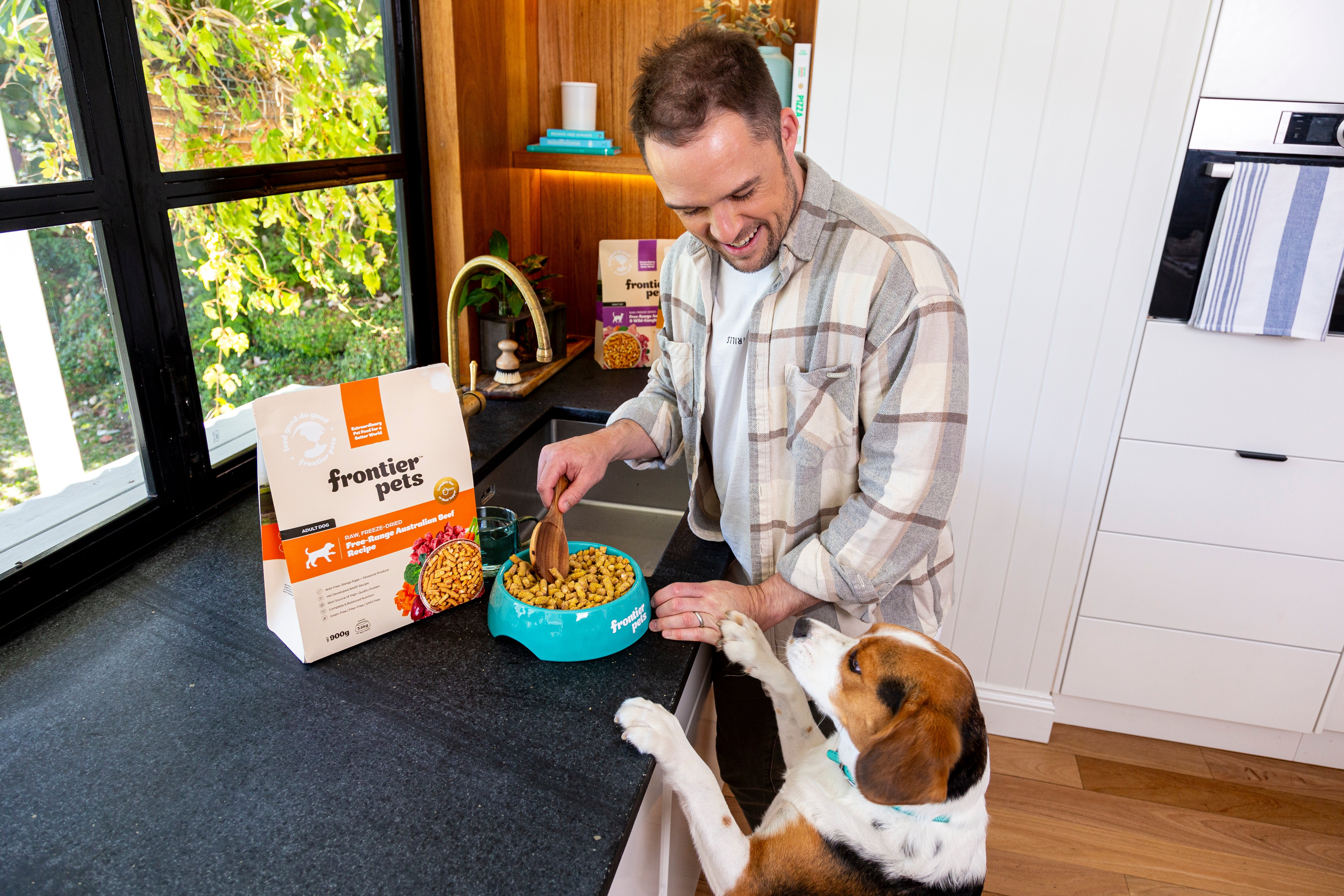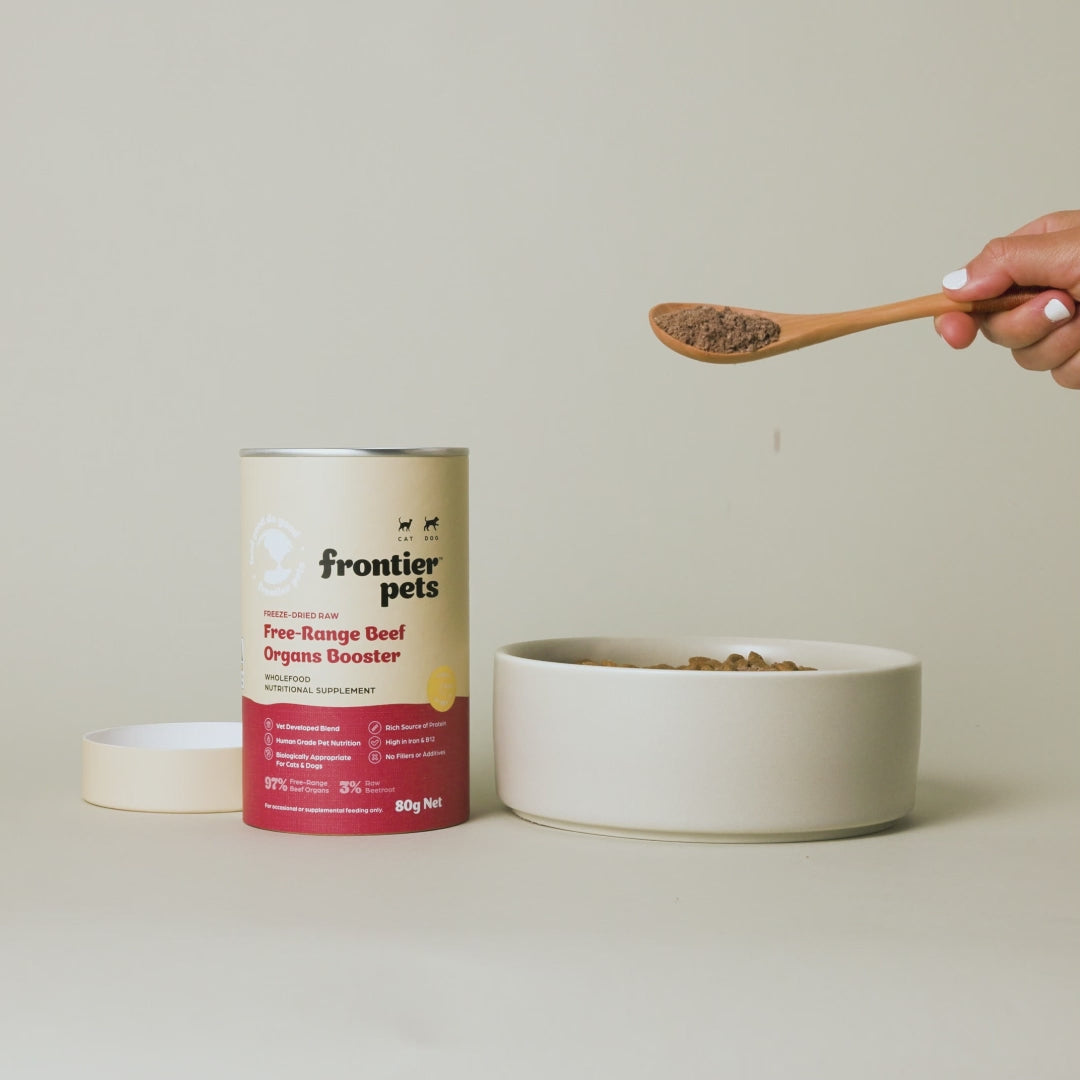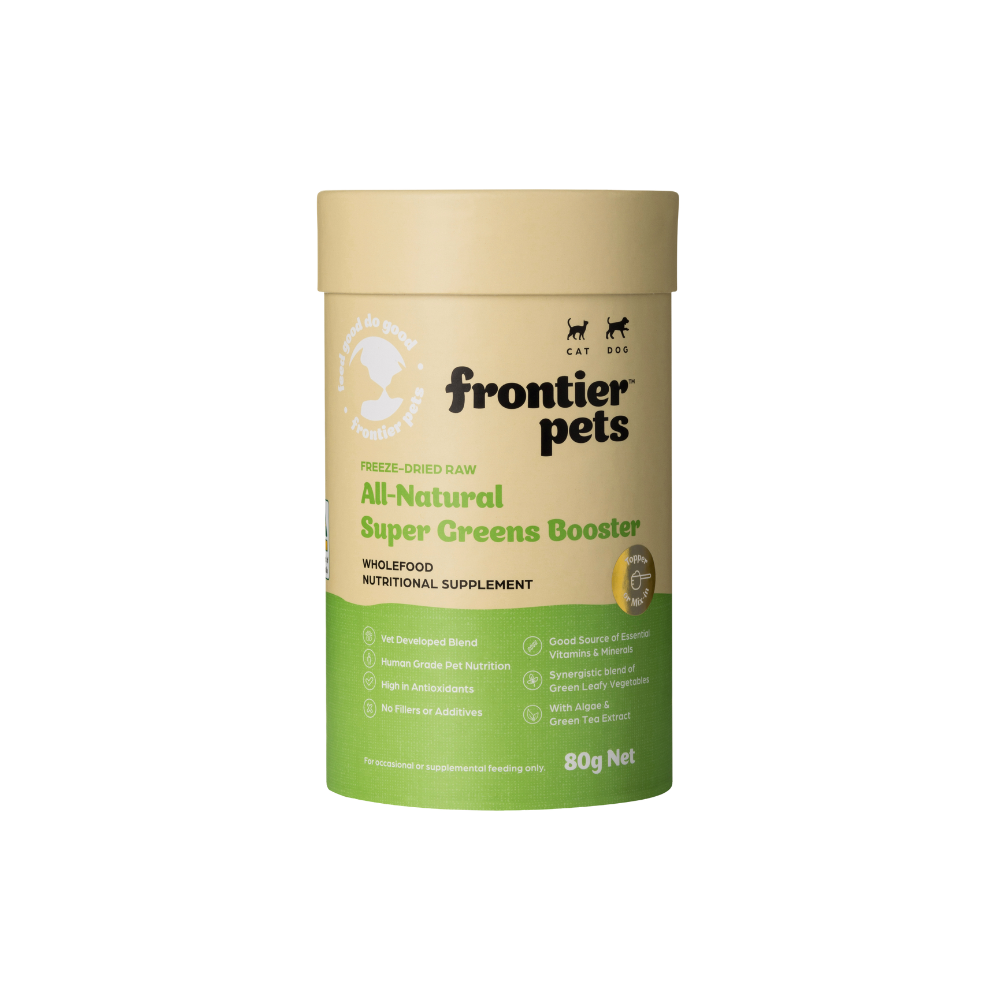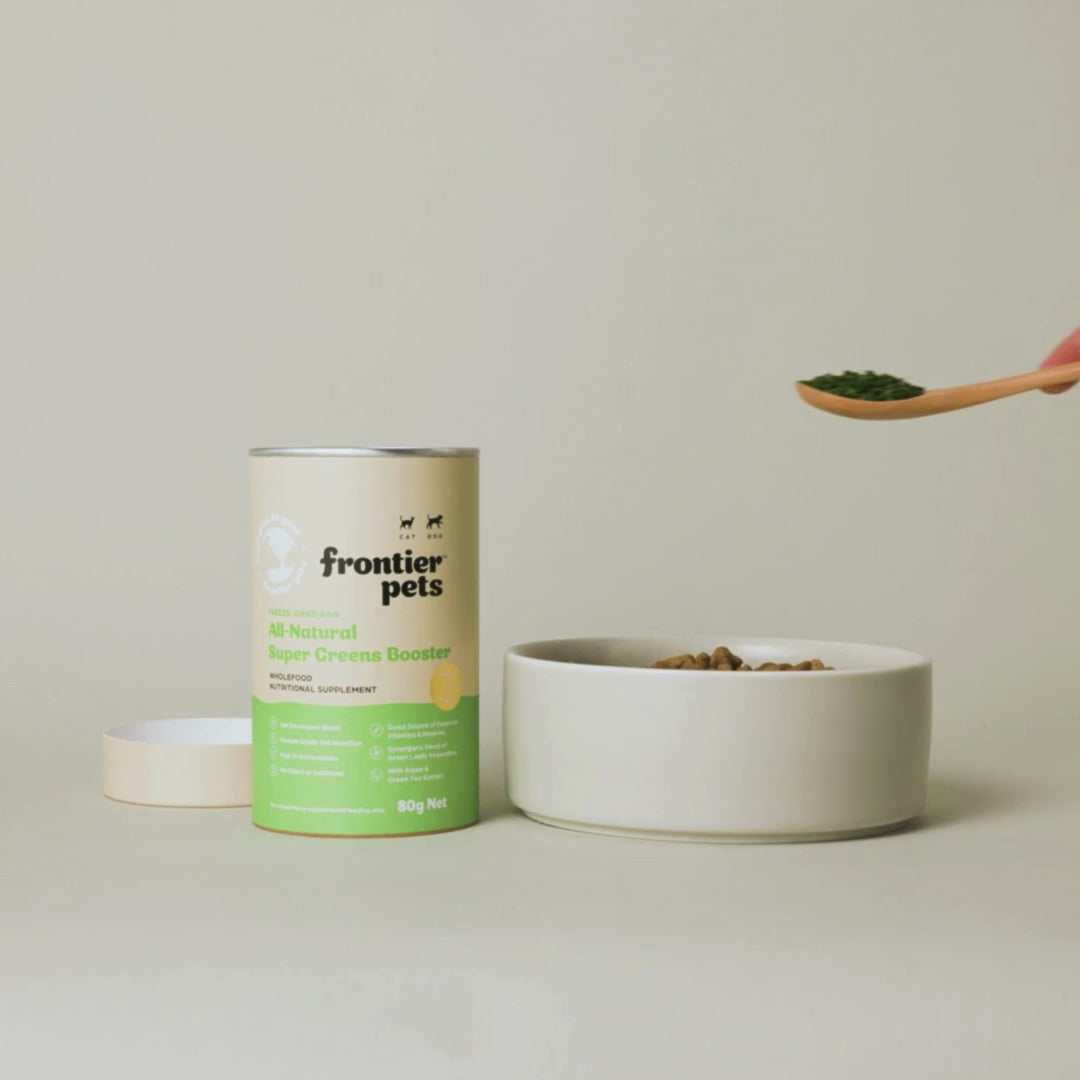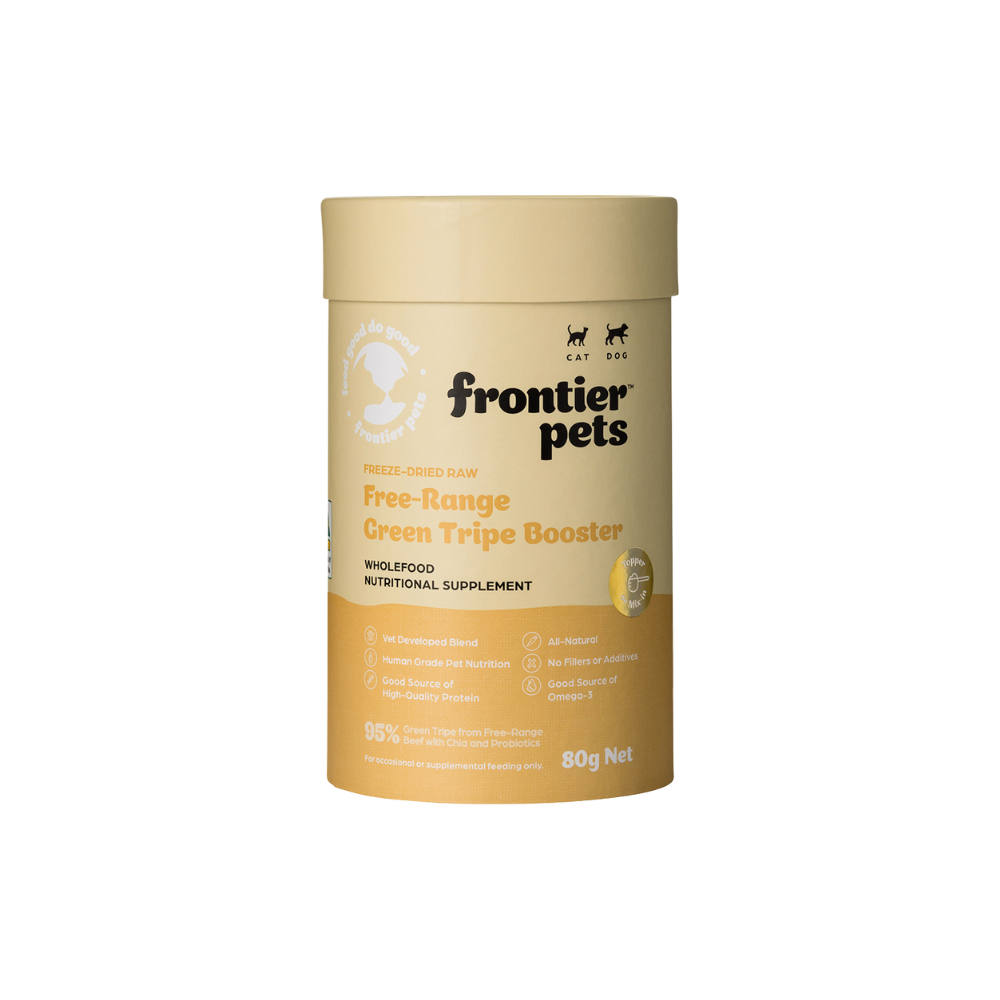Feeding Guides for Dogs
Welcome to our product feeding guides. These Daily Feeding Guides for Dogs are a quick reference for the amount of Frontier Pets Freeze-Dried Raw Dog Food to feed your dog, based on their weight. It's always important to remember that these are guides only. You may find that your dog may requires less or more food per day based on their age, condition and their levels of activity. As the owner or carer of your beloved pet, you are best placed to judge how much food they require.
IMPORTANT: If your dog is new to raw feeding/raw dog food, don't forget you need to transition carefully. See our 'How To Transition to Raw Feeding' information here.
The following information is general advice, but as each pet is an individual, seek veterinary advice if you’re not confident or are concerned, particularly if you think your pet might have special dietary needs or has had a reaction to a standard or raw diet before.
![]() Free-Range Beef
Free-Range Beef

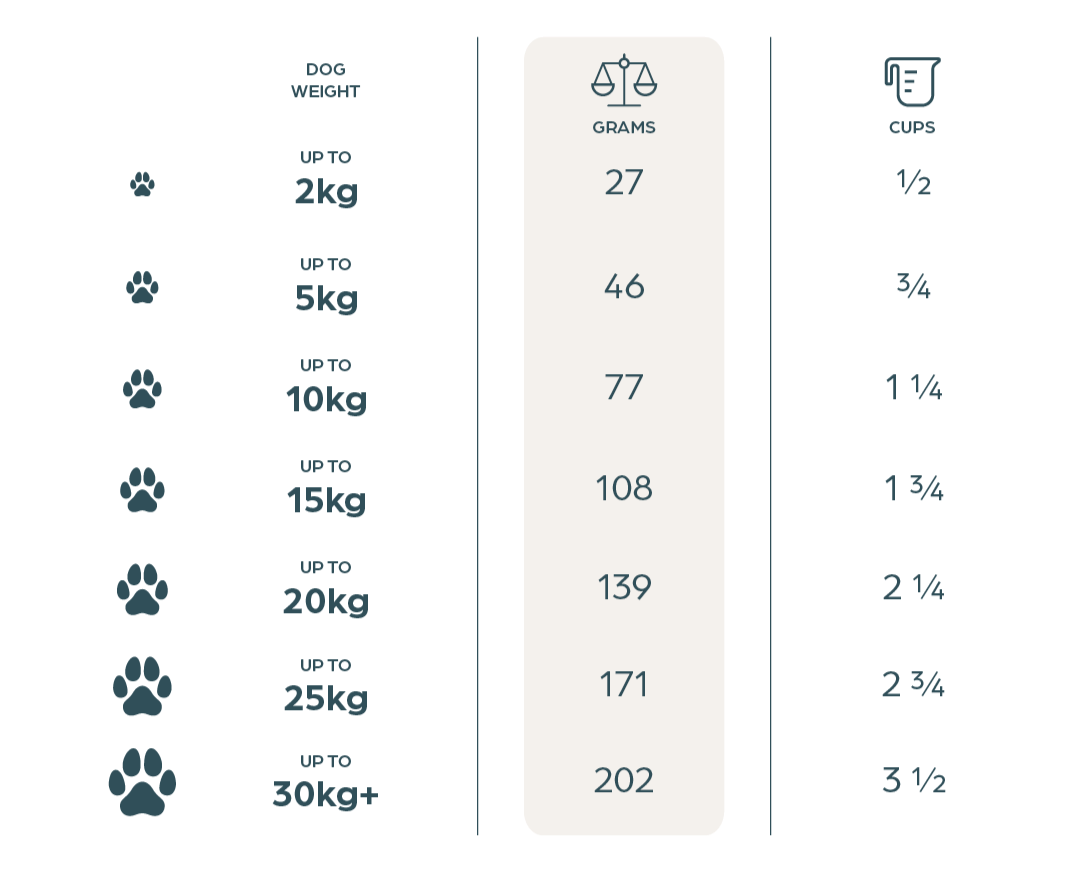
Metric measuring cup (250ml). 1 Cup = approximately 60 grams of dry food. This is a general advice only. Measurements are approximate. Adjust feeding amounts as necessary to maintain optimal weight. Complete and balanced, suitable for all life stages. For pregnant bitches: Double the feeding quantities shown above.
![]() Free-Range Chicken
Free-Range Chicken
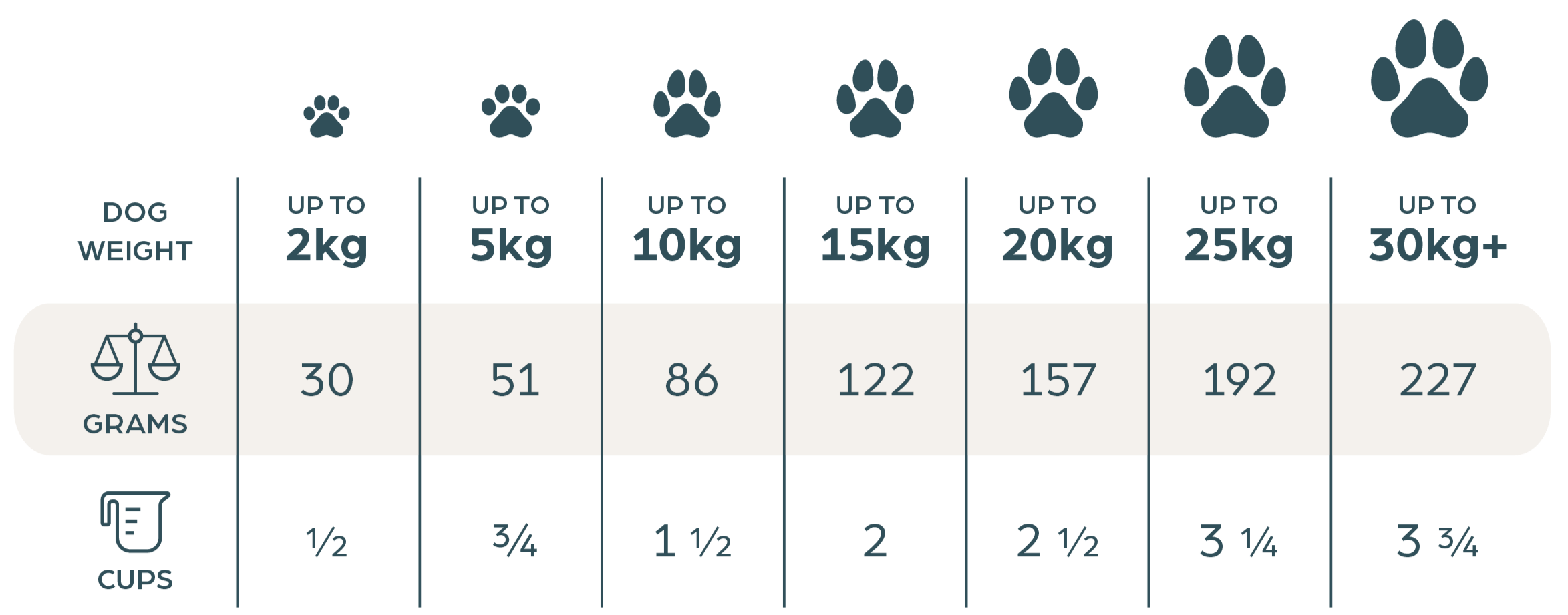

Metric measuring cup (250ml). 1 Cup = approximately 60 grams of dry food. This is a general advice only. Measurements are approximate. Adjust feeding amounts as necessary to maintain optimal weight. Complete and balanced, suitable for all life stages. For pregnant bitches: Double the feeding quantities shown above.
![]() Free-Range Pork
Free-Range Pork
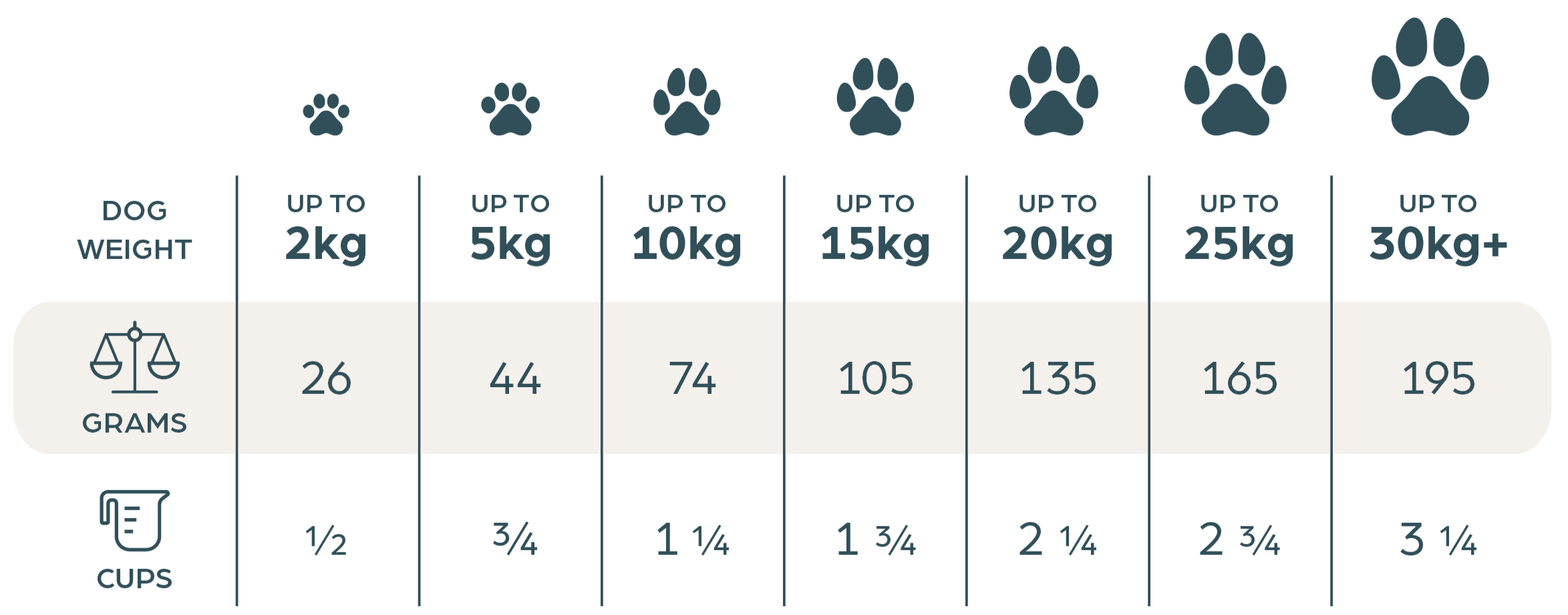
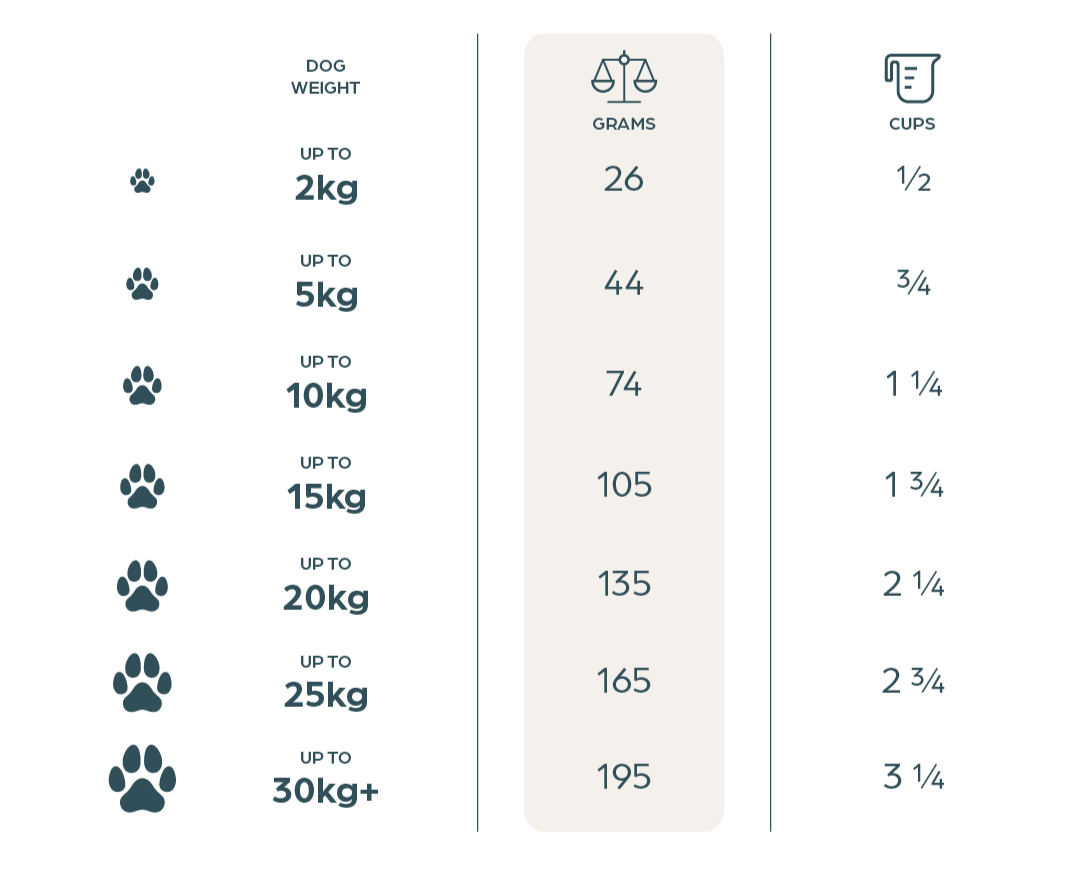
Metric measuring cup (250ml). 1 Cup = approximately 60 grams of dry food. This is a general advice only. Measurements are approximate. Adjust feeding amounts as necessary to maintain optimal weight. Complete and balanced, suitable for all life stages. For pregnant bitches: Double the feeding quantities shown above.
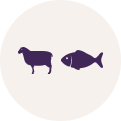 Lamb & Fish
Lamb & Fish
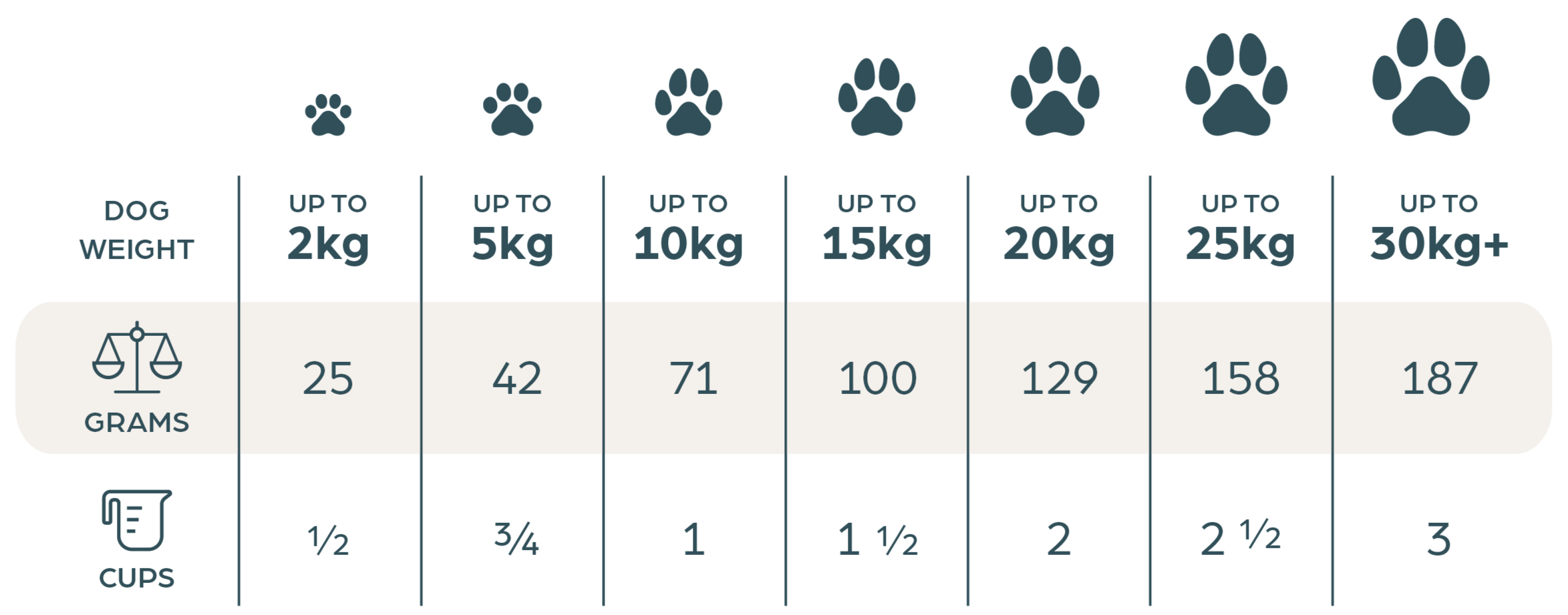
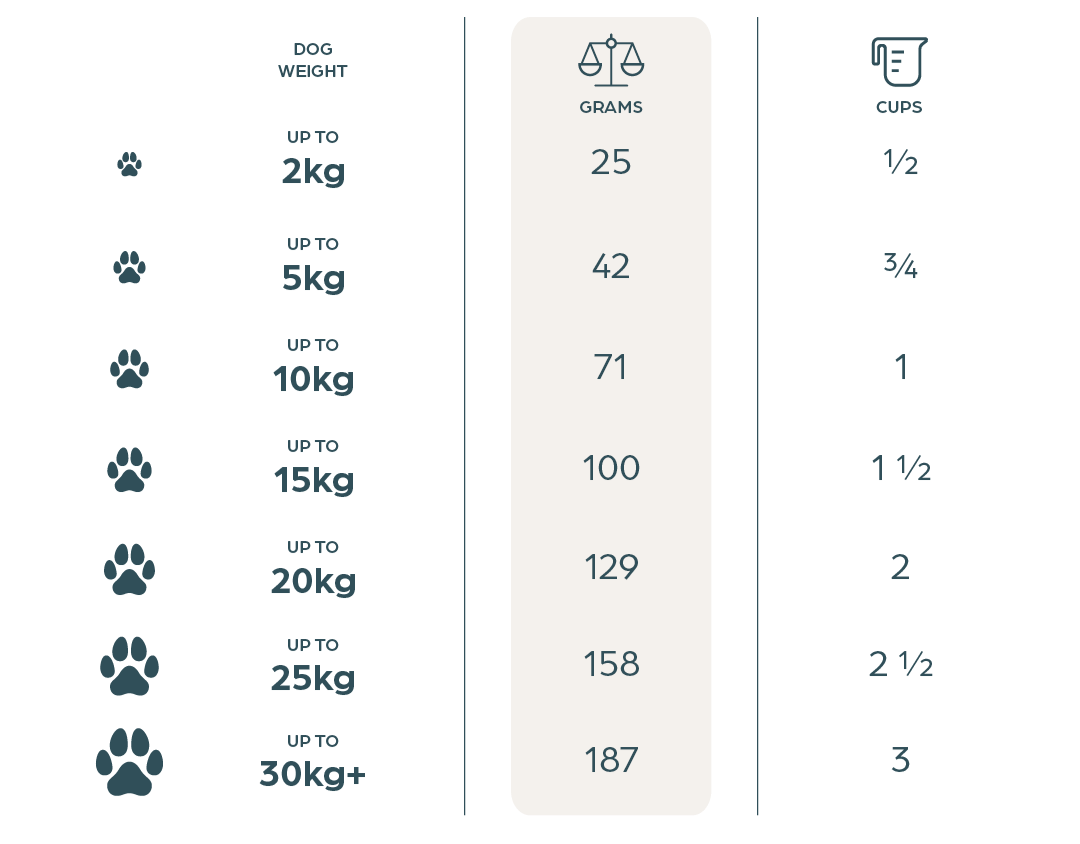
Metric measuring cup (250ml). 1 Cup = approximately 60 grams of dry food. This is a general advice only. Measurements are approximate. Adjust feeding amounts as necessary to maintain optimal weight. Complete and balanced, suitable for all life stages. For pregnant bitches: Double the feeding quantities shown above.
Best Sellers Dog Food
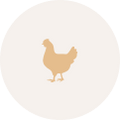

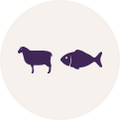


Feeding your pet the right amount of food is essential for their health, energy levels, and longevity. Overfeeding can lead to obesity and health issues, while underfeeding can cause nutrient deficiencies and low energy.
Here’s a general guide to how much to feed your dog, but we recommend checking our detailed feeding guide and consulting your vet for advice tailored to your pet's specific needs.
- Up to 2kg: 25 - 30 grams
- Up to 5kg: 42 - 51 grams
- Up to 10kg: 71 - 86 grams
- Up to 15kg: 100 - 122 grams
- Up to 20kg: 129 - 157 grams
- Up to 25kg: 158 - 192 grams
- 30kg or more: 187 - 227 grams or more
This is a general recommendation, so adjust the amount based on your dog's activity level, age, and health. For more detailed feeding information, please refer to the feeding guide above or consult your vet.
A daily feeding guide is essential for keeping your pet healthy, active, and at an ideal weight. Overfeeding is one of the most common mistakes pet owners make, leading to obesity, diabetes, and heart disease. On the flip side, underfeeding can result in nutrient deficiencies, weakened immunity, and low energy levels. A proper feeding guide ensures your pet gets the right balance of nutrients to thrive.
- Use a Measuring Cup: Eyeballing portions can lead to overfeeding. Use a measuring cup for accuracy.
- Weigh the Food: For precise portion control, use a kitchen scale.
- Follow Feeding Guides: Start with the feeding recommendations on the food package and adjust based on your pet's needs.
It's easy to make simple mistakes when it comes to feeding your pet, but even small slip-ups can have a big impact on their health and weight. Understanding common feeding mistakes and how to avoid them can help you maintain a balanced diet for your pet. Here are a few common mistakes to watch out for:
- Free-Feeding: Leaving food out all day encourages overeating.
- Inconsistent Portions: Stick to a routine with accurate measurements.
- Not Counting Treats: Excess treats can quickly add up in calories.
Frequently Asked Questions
While exact amounts can vary, a good starting point is to consult our on-pack feeding guide, which gives a ballpark estimate that fits most. Bear in mind that all these are estimates, and the only way to know for sure is to look at, feel, and weigh your dog often.
There is something called a Body Condition Score Chart, which helps to tell you if your dog is too thin, too heavy, or just right. Adjust the daily amount fed up or down until your dog's weight and condition are just right. If you are unsure, consult your vet.
Look for whole food ingredients that sound healthy and appropriate: things like meat, fish, eggs, offal, bones, fruits and vegetables, seeds and nuts. Avoid strange chemicals and things you’ve never heard of and have trouble pronouncing. Avoid diets based on grains and cereals, as these are not natural foods and look for complete and balance dog food.
What does complete and balanced mean?
This means that the food contains all the nutrients that a dog needs as set down by one of the International Standards organisations: the Association of American Feed Control Officials (AAFCO) USA, the National Research Council (NRC) UK, or FEDIAF (Europe). Check the labels to see if the food qualifies. Consider organic dog food options if that aligns with your preferences.
It's generally best to avoid feeding your dog right before or after exercise.
It takes energy to exercise, and it also takes energy to digest. Separating the two activities helps your dog’s body prioritise one activity or the other.
Exercising on a full stomach can cause indigestion and also can increase the risk of bloat, a serious condition where the stomach twists. This is especially the case with large breed dogs. Wait two hours after eating before engaging in vigorous exercise. It is recommended to let your dog rest and cool down for at least 30 minutes after exercising before offering a meal. This allows them to cool down and allows digestion to function normally.
Here are some additional tips:
- Always provide small amounts of fresh, clean water before, during, and after exercise. The amount of water needed will vary with the temperature of the day. Do not exercise in overly hot weather, and avoid the hot part of the day in summer. Drinking too much too fast may cause vomiting or regurgitation.
- If your dog is very active, pregnant and lactating, you may need to consider offering smaller, more frequent meals throughout the day if your dog is prone to vomiting.
If you're unsure about the best feeding schedule for your dog, contact us for general information. Your vet can provide specific advice best suited for your animal’s particular needs.
Everyone’s feeding schedule will be unique, but there are generally some basic principles.
Do what works for you and your lifestyle and set the times that suit you. Adult dogs typically eat twice a day, and pups more frequently, 3-4 times daily. Remember to consider exercise times and not eat too close to exercise. Depending on your work schedule, one meal can be a quick meal, and another can be a more complicated meal, such as scatter feeding or using a lick mat or Kong toy for enrichment.
Raw food is more nutritionally dense, keeping your dog fuller for longer. This may lead to your dog skipping a meal occasionally. Don't mistake this for disliking the food—they simply might not be hungry yet. Intermittent fasting may be beneficial for dogs as well as people. Remember, too, that in nature, food isn't always available, so appetite varies to mimic these patterns. Sometimes, dogs are more hungry than others. Adjust the number of meals or food amount accordingly.
A meal plan is essential for many dogs' well-being. It can be helpful to establish set feeding times, even if they aren’t at the same time each day but more around your movements. It never hurts to throw some variety into the schedule. It builds resilience and also adds interest and excitement.
Remember to make your dog an active participant in feeding, don’t just put food in the bowl. Make feeding time fun and challenging. Their mental health will benefit from this. Look for enriching and challenging ways for them to get their meals.
If you have any questions or concerns, then talk to your vet.
Remember that while giving your dog treats is okay, it's important to be mindful of the quantity and quality. Treats should ideally make up no more than 10% of your dog's daily calorie intake (energy). Keeping an eye on portion control is crucial to avoid overfeeding.
It's also important to steer clear of common dog feeding mistakes, such as offering them unhealthy human food scraps or allowing them to free-feed throughout the day. By being mindful of these factors, you can help ensure that your dog maintains a healthy diet and weight. Be sure to choose healthy treats. It is important to remember to deduct the amount of any treats from the recommended daily feeding amount. The amounts listed in our daily feeding guide are calculated as a sole diet, i.e. if the dog is not getting anything else to eat.
